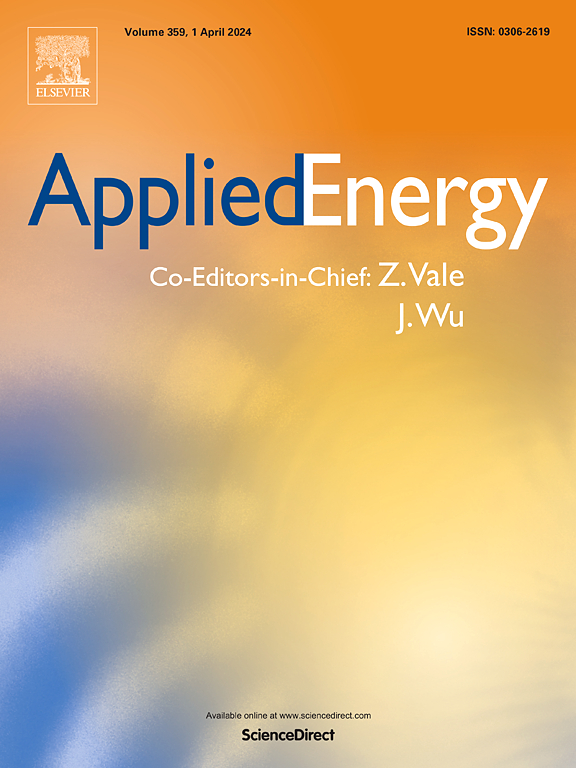Characterizing effective building clusters: An extensive study on diverse cluster composition, distributed energy resource utilization, and energy performance
IF 10.1
1区 工程技术
Q1 ENERGY & FUELS
引用次数: 0
Abstract
Distributed energy resources (DERs) hold immense potential for urban sustainability and resilience. However, effectively integrating DERs across diverse building types remains a challenge. The concept of “building clusters,” groups of buildings with shared energy generation and storage resources, has emerged as a promising way to better utilize these DERs. Using validated synthetic building load data and multi-dimensional performance metrics, this study investigates the impact of building cluster composition on energy performance, advocating for a shift from conventional homogeneous cluster design. We analyze a vast dataset of over 15,000 unique five-building clusters, encompassing 16 distinct building types, each equipped with solar PV and storage. Using a multi-metric ranking system, we evaluate and rank cluster energy performance based on grid independence, energy cost reduction, and DER utilization efficiency. Our findings reveal that building type diversity significantly enhances cluster performance, outweighing traditionally emphasized factors such as total building area. High-performing clusters exhibit complementary load profiles across daily and seasonal timescales, enabling more efficient utilization of shared DER resources. Notably, strategic combinations of buildings with contrasting operational patterns (e.g., schools and office buildings) demonstrate superior year-round performance and grid independence. This study offers vital insights for urban planners and energy designers, highlighting the importance of prioritizing strategic diversity in building clusters over traditional homogeneity to maximize the potential of DERs. Its insights can provide an empirical foundation for zoning policies and incentives that promote mixed-use communities, which naturally support high-performing DER-integrated clusters. While focused on New York, the findings provide a foundation for broader applications in urban energy systems.
求助全文
约1分钟内获得全文
求助全文
来源期刊

Applied Energy
工程技术-工程:化工
CiteScore
21.20
自引率
10.70%
发文量
1830
审稿时长
41 days
期刊介绍:
Applied Energy serves as a platform for sharing innovations, research, development, and demonstrations in energy conversion, conservation, and sustainable energy systems. The journal covers topics such as optimal energy resource use, environmental pollutant mitigation, and energy process analysis. It welcomes original papers, review articles, technical notes, and letters to the editor. Authors are encouraged to submit manuscripts that bridge the gap between research, development, and implementation. The journal addresses a wide spectrum of topics, including fossil and renewable energy technologies, energy economics, and environmental impacts. Applied Energy also explores modeling and forecasting, conservation strategies, and the social and economic implications of energy policies, including climate change mitigation. It is complemented by the open-access journal Advances in Applied Energy.
 求助内容:
求助内容: 应助结果提醒方式:
应助结果提醒方式:


